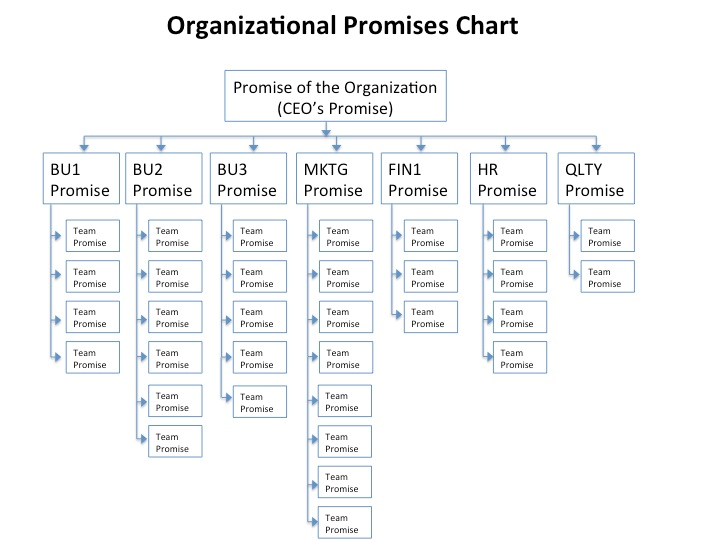An organization exists to fulfil a certain promise. One powerful interpretation of looking at an organization is as a ‘network of promises, to fulfil a larger promise’i.
Let’s begin with, what is a promise?
A promise is a declaration of a future you commit to produce. Promise is taking a stand that you are responsible for the outcome of the promise. When we make a promise, we do not act to ‘do the best we can’ (unless this is what we promised), or to do ‘do what is appropriate and see what happens’ and then use breakdowns and excuses for non-fulfillmentii.
Who makes organization’s promise?
The Chief Executive Officer (CEO) of the organization makes the organization’s promise (or any one else with a similar title who is the head of the organization). The CEO has been granted the authority by its shareholders, through its board, to make these promises. However, the CEO cannot fulfil this promise alone.
An organization is a network of promises, to fulfil a larger promise
The CEO then needs to ensure that he has promises from his leadership level 2 (L2) laddering up to his promise. The CEO requests the different functional heads, and the different business unit (BU) heads for promises (those that ladder up to his organizational promise and ensure that he fulfils his promise). The heads are leaders of these business units and functions. These leaders make the promises, however, the ownership for the fulfillment of these promises needs to be taken by all members in the entire business unit or the function.
The BU or the function leader is the person coordinating, internally and externally, by making these promises and then by effectively managing these promises. The leader has to ensure that the promise they make will have a buy-in from the entire team, if not, this will lead to dissatisfaction. More importantly, without the entire team taking ownership, there is a small chance, if any, that the promise will be fulfilled.

These leaders may further make more requests to teams and individuals reporting in to them to help them fulfil their promises. This loop continues. You now have an entire organization – not of roles, but of promises.
Having this structure in an organization, of promises, is building a culture of commitment. As simple as this seems, and as powerful as this is, this is not necessarily easy to implement. To begin with, often the CEO is not clear what is his or her organizational promise is. And till that does not happen, the CEO does not know what promises he or she needs from his or her Level 2 leadership team.
“You now have an entire organization – not of roles, but of promises.”
More importantly, the leaders across levels don’t just make and receive promises – what they need to make and receive are ‘trustworthy promises’. In our work with organizations, often we have observed people to be flaky, making promises that they themselves do not trust.
At the Institute for Generative Leadership, we have worked with many organizations with supporting them in building this structure. However, this is just the first step. Managing this structure is perhaps where the rubber meets the road.
As a CEO, or head of large team, if you need help in designing and putting this structure together; and in building a culture of commitment in your team, we invite you to a conversation with one of our leaders.
Schedule a Conversation
Please help us with your details.
[i] I learnt this from Bob Dunham, Founder, Institute for Generative Leadership, USA
[ii] ibid








